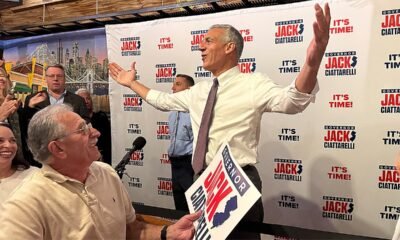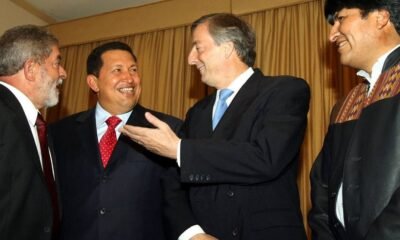INTERNACIONAL
Russia blames Trump for Iran nuclear crisis, says E3 has turned to ‘diplomacy at the barrel of the gun’
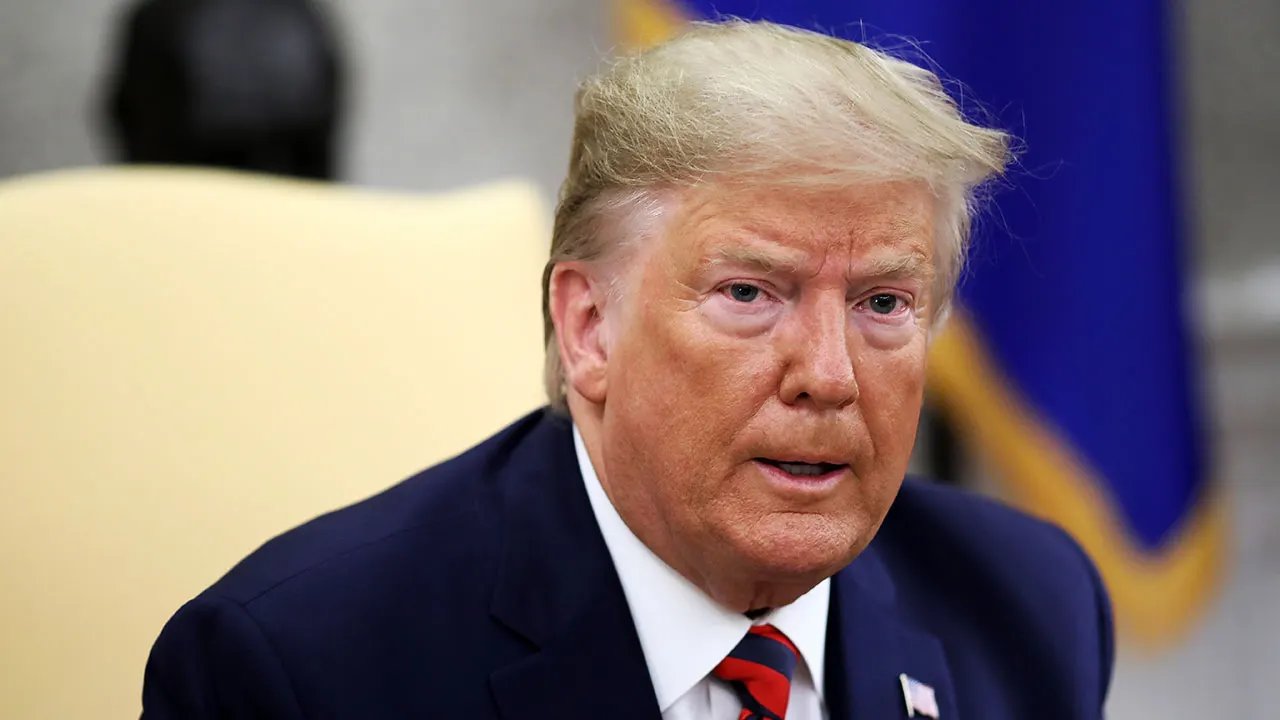
NEWYou can now listen to Fox News articles!
Russia on Thursday struck out against President Donald Trump’s decision to withdraw the U.S. from the 2015 nuclear agreement with Iran and argued Washington is to blame for Tehran’s non-compliance with the international treaty.
The accusation came just hours after the U.K., France and Germany (E3) alerted the UN Security Council that they had initiated the snapback mechanism to reimpose severe UN sanctions on Iran within 30-days, following its non-compliance with the Joint Comprehensive Plan of Action (JCPOA.)
«The United States abandoned JCPOA, and since then the situation started [to] deteriorate,» Dmitry Polyanskiy, Russia’s UN Ambassador, said Thursday.
«We should not confuse the real source of the problem that happened in 2018,» he added in reference to Trump’s decision to drop the U.S. from the JCPOA over Iran’s alleged violation of the agreement.
Dmitry Polyanskiy, First Deputy Permanent Representative of the Russian Federation, speaks during a United Nations Security Council meeting on maintenance of peace and security of Ukraine at the U.N. Headquarters on in New York City on March 26, 2025. (Michael M. Santiago/Getty Images)
UK, FRANCE, GERMANY TRIGGER UN SANCTIONS ON IRAN OVER ‘SIGNIFICANT’ NUCLEAR PROGRAM DEFIANCE
Though Trump has repeatedly claimed Tehran was violating the agreement, the UN’s nuclear watchdog, the International Atomic Energy Agency (IAEA) as well as the other signatories on the JCPOA said there was no evidence that Iran had begun expanding its nuclear program until 2019 – a stance it continues to hold.
«We all know that the measures that were taken by Iran in terms of uranium enrichment, they were taken in response to the U.S. withdrawal from JCPOA,» the Russian diplomat said Thursday. «And these measures can easily be reviewed.»
Russia and China on Thursday introduced a draft UNSC resolution in an attempt to extend the timeline of the 2015 Iran nuclear agreement by six months and therefore extend when sanctions can be put on Tehran.
But given Iran’s refusal to comply when a similar extension was floated in July by E3 negotiators, it seems unlikely that the U.S., France or the U.K., as permanent members of the UNSC, will agree to push the action forward.
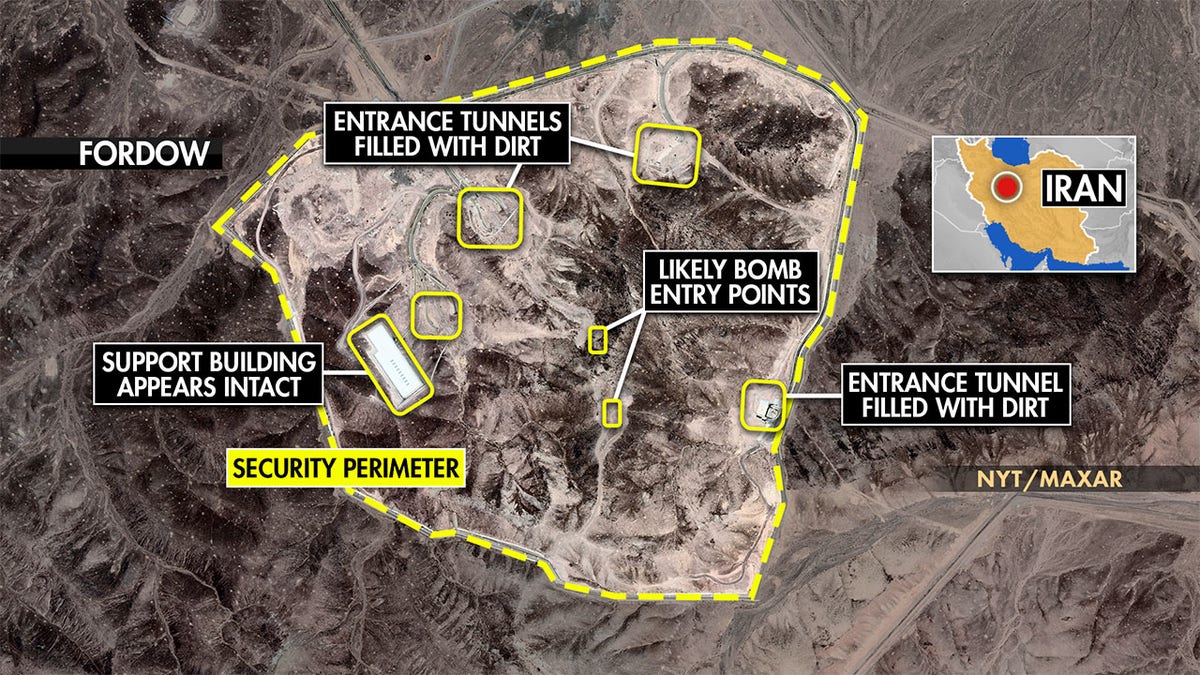
A map shows damage to Iran’s Fordow nuclear site after being struck by the United States in Operation Midnight Hammer on June 22, 2025. (Fox News)
IRAN SEEKS CHINA, RUSSIA HELP TO STALL UN SANCTIONS AHEAD OF NUCLEAR TALKS WITH EUROPEANS
The U.S. has long called on the other signatories to reinforce snapback sanctions on Iran for the violations after it lost its ability to do so by bowing out of the agreement in 2018.
But despite clear evidence that Iran has in recent years violated the JCPOA, including by amassing up to 45 times the amount of enriched uranium that it is permitted to have, operating advanced centrifuges and denying the IAEA access to its nuclear sites, the Russian official claimed the «move by E3 cannot and should not entail any legal or procedural effect.»
«It’s a mere escalatory step,» he continued. «Western countries…don’t care about diplomacy, and they care only about, blackmail and, threats, and coercion of independent countries.»
A UK official confirmed Thursday morning that attempts to reach a diplomatic solution with Iran have been ongoing for years, including in 2022 when a proposal was agreed to by all JCPOA participants, including Russia and China, but which Iran rejected.
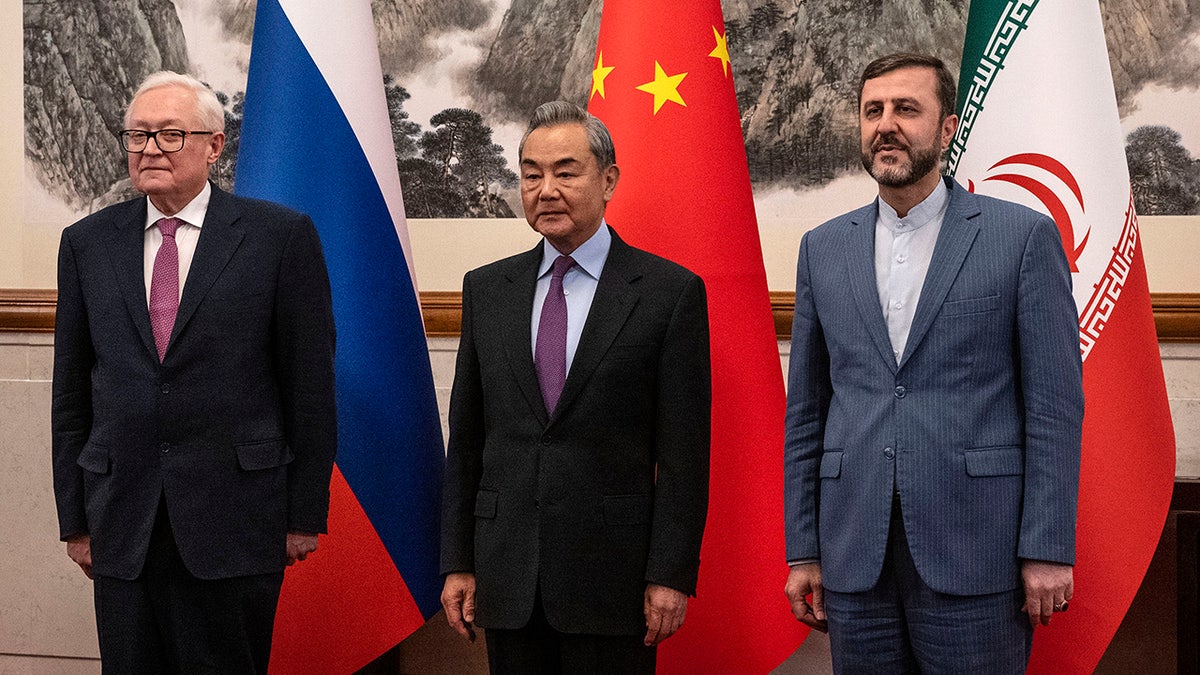
Chinese Foreign Minister Wag Yi, stands with Russian Deputy Foreign Minister Sergey Ryabkov, left, and Iranian Deputy Foreign Minister Kazeem Gharibabadi, right, before a meeting regarding the Iranian nuclear issue at Diaoyutai State Guest House in Beijing, China on March 14, 2025. (Getty Images)
CLICK HERE TO GET THE FOX NEWS APP
The official also said that there had been «very intense diplomacy» over the last «12 months, 6 months, 6 weeks,» but which Russia appeared to dismiss on Thursday.
«The world is at a crossroads,» Polyanskiy said. «It’s quite clear. One option is peace, diplomacy and goodwill.
«Another option is…diplomacy at the barrel of the gun…extortion and blackmail,» he added.
The White House did not immediately respond to Fox News Digital’s questions.
iran,russia,china,donald trump,united kingdom,france,germany
INTERNACIONAL
Hamas releases coffin of dead hostage to Red Cross, IDF confirms

NEWYou can now listen to Fox News articles!
A coffin of a deceased hostage has been transferred from Hamas to the Red Cross, the Israel Defense Forces (IDF) said on Monday.
The coffin is being transferred into Red Cross’ custody and is on the way to Israeli troops in Gaza, according to the IDF.
«Hamas is required to uphold the agreement and take the necessary steps to return all the hostages,» the IDF said on X.
Earlier on Monday, it was announced that the remains of Nepali student Bipin Joshi, who was held hostage in Gaza, were being flown from Israel to his hometown of Bhimdattanagar.
US MILITARY TO OVERSEE NEXT PHASE OF PEACE DEAL FROM COORDINATION BASE IN ISRAEL
A Nepal Army personnel pays his last respects to the coffin of Bipin Joshi, a deceased Nepali student who was killed while being held hostage in Gaza, at the Tribhuvan International Airport in Kathmandu on October 20, 2025, days after it was returned from Hamas captivity under a Gaza ceasefire and hostage exchange deal. ( Prakash Mathema/AFP)
CLICK HERE TO GET THE FOX NEWS APP
Hamas has now handed over the remains of nearly half of the 28 dead hostages in Gaza, a key step in the week-old ceasefire process meant to end two years of war.
The Associated Press contributed to this report.
This is a developing story. Check back here for updates.
middle east,israel,world,wars
INTERNACIONAL
Las cintas kinesiológicas, ¿ayudan al entrenamiento?

Durante la temporada de maratones, es probable que veas a muchos atletas luciendo la colorida cinta flexible, a menudo conocida como KT Tape debido a la popular marca, mientras corren y hacen entrenamiento combinado.
Las tiras elásticas, que están diseñadas para moverse con tu cuerpo como una especie de segunda piel, tienen la reputación de ayudar a los atletas cotidianos a controlar el dolor, prevenir lesiones y mejorar el rendimiento. Ahora hay decenas de versiones de la cinta en el mercado, con diferentes grados de adherencia, elasticidad y resistencia al agua. Algunas incluso llevan ingredientes especiales, como mentol o cobre.
Leé también: Telerrehabilitación: una guía práctica establece pautas que revolucionan la fisiología a distancia
Pero ¿realmente hace algo la cinta? La respuesta es más compleja de lo que pensaron en algún momento los científicos del deporte. Esto es lo que hay que saber.
Puede que la cinta kinesiológica no impacte directamente a tus músculos
La cinta kinesiológica la inventó un quiropráctico japonés en la década de 1970, como alternativa a la cinta ortopédica, que era más rígida y limitaba la movilidad de sus pacientes. Pero no fue hasta los Juegos Olímpicos de Verano de 2008, cuando algunos atletas de élite utilizaron la cinta durante las competencias, que se convirtió en una herramienta de uso generalizado para mejorar el estado físico.
Por aquel entonces, los expertos en medicina deportiva teorizaron que la cinta podría mejorar la función muscular al levantar la piel y otros tejidos de tal forma que mejora el flujo sanguíneo, promueve el drenaje linfático y, en general, anima a los músculos a trabajar de una manera más óptima, dijo Christopher DaPrato, fisioterapeuta de la Universidad de California en San Francisco, quien trabaja con atletas de élite. Las cintas kinesiológicas despiertan polémica por su utilidad (Eric Helgas para The New York Times)
“Cuando la cinta entró en escena, se dio un gran impulso a sus efectos mecánicos”, dijo DaPrato. Pero las investigaciones han encontrado pocas pruebas de que la cinta funcione de este modo, dijo.
Los beneficios pueden ser neurológicos y psicológicos
De todas maneras, muchos atletas afirman sentirse mejor cuando tienen puesta la cinta, sobre todo si la aplican cerca de zonas que les duelen o les producen tensión.
Las investigaciones sugieren ahora que la cinta puede tener beneficios neurológicos y psicológicos. En particular, algunos estudios han descubierto que, en determinadas circunstancias, la cinta puede ayudar a mejorar la propiocepción, término científico que designa la conciencia corporal. Por ejemplo, si tienes la cinta en el tobillo, puedes ser más consciente de la forma en que tu pie golpea el suelo cuando trotas. Una mejor propiocepción está relacionada con un mejor equilibrio y coordinación.
Algunos expertos tienen la teoría de que la cinta actúa ejerciendo presión sobre la capa de tejido que hay justo debajo de la piel, que contiene receptores y terminaciones nerviosas relacionadas con la propiocepción. Se cree que esta presión “amplifica la señal” entre el lugar donde se aplica la cinta y el cerebro, dijo Shashank Ghai, profesor titular asociado de la Universidad de Karlstad en Suecia, quien ha estudiado la cinta kinesiológica. Sin embargo, advierte que el efecto de la cinta en la propiocepción parece ser moderado, y no todos los estudios han demostrado una relación. “No puedes esperar resultados magníficos”, dijo.
Algunos estudios sugieren también que la cinta puede ayudar a disminuir la percepción del dolor, dijo Fatemeh Dehghan Chenijani, doctoranda en kinesiología de la Universidad Estatal de Wayne y autora principal de un estudio de revisión de 2024 sobre el vendaje kinesiológico en el deporte. Pero también en este caso la evidencia sigue siendo muy desigual.
Una teoría que se ha mantenido constante en las investigaciones es que para muchos atletas, los beneficios de la cinta kinesiológica son psicológicos, o efectos placebo.
Aplicar cinta sobre un músculo débil, o una zona propensa a lesionarse, puede dar a los atletas una sensación de seguridad durante su entrenamiento o competición, dijeron los expertos.
“Hace que tu cerebro se sienta mejor”, dijo DaPrato, por lo que “puede darte un poco más de confianza y reducir parte del miedo y la evitación o la ansiedad que puedas tener en torno a una zona que no se siente tan bien”.
Esta confianza puede ayudarte a entrenar más intensamente o a moverte con más fluidez, añadió.
Encontrar la cinta adecuada puede requerir ensayo y error
Hace una década, los especialistas en medicina del deporte pensaban que, para ser eficaz, la cinta kinesiológica debía aplicarse con mucha precisión, normalmente por un experto. Pero ahora muchos médicos creen que la gente puede aplicársela por sí misma, dijo DaPrato.
Puede que tengas que probar unos cuantos tipos para encontrar el que mejor se adapte a ti. “Elige una marca que permanezca en tu piel y te siente bien”, dijo DaPrato. “No importa el color ni la marca que tengan”. Si piensas llevar la cinta durante una carrera o competición, pruébala antes del gran día.
DaPrato recomendó estirar la cinta sobre los músculos o ligamentos que sientas débiles o inestables cuando hagas ejercicio, en lugar de ponerla directamente sobre una zona dolorida. Pero no te excedas: envolver la cinta con demasiada fuerza o ponerla en capas demasiado gruesas podría limitar el flujo sanguíneo o la amplitud de movimiento. Si necesitas orientación para empezar, un fisioterapeuta puede ayudarte.
Leé también: Por qué es importante respetar los tiempos de recuperación después de una fractura
Aunque la cinta kinesiológica puede ser una herramienta útil, no sustituye al entrenamiento ni a la rehabilitación. “Es una gran muleta a corto plazo”, dijo DaPrato. Pero, en última instancia, te beneficiarás más si adquieres la fuerza necesaria para prescindir de ella.
(*) Por Danielle Friedman
The New York Times
INTERNACIONAL
Trump goes all-out against Colombia’s Petro after claims drug strike killed fisherman: What we know

NEWYou can now listen to Fox News articles!
Colombia’s government says a fisherman killed in a recent US strike near Venezuelan waters was not a drug trafficker — directly challenging Washington’s claim that its growing Caribbean campaign is hitting «narco-terrorist» targets and pushing relations with the key non-NATO ally into a new spiral.
Colombian President Gustavo Petro, who aligns politically with Venezuelan ruler Nicolás Maduro, has had a combative relationship with President Donald Trump and is expected to challenge US actions. Yet Washington has released only limited evidence linking the targeted vessels to drug networks, and US intelligence officials have declined to say how confident they are in the assessments that led to the strikes.
Secretary of War Pete Hegseth has insisted the intelligence is conclusive.
«Our intelligence, without a doubt, confirmed that this vessel was trafficking narcotics, the people onboard were narco-terrorists, and they were operating on a known narco-trafficking transit route,» Hegseth said after an Oct. 3 strike.
WASHINGTON’S SHADOW WAR: HOW STRIKES ON CARTELS THREATEN TO COLLAPSE MADURO’S REGIME
Colombian President Gustavo Petro, who aligns politically with Venezuelan ruler Nicolás Maduro, has had a combative relationship with President Donald Trump and would be inclined to challenge U.S. actions (Sebastian Barros/NurPhoto via Getty Images)
Over the weekend, U.S. Southern Command carried out another strike, this one targeting a vessel it said was affiliated with the Ejército de Liberación Nacional (ELN), a U.S.-designated terrorist organization. Hegseth said three people were killed.
«The vessel was known by our intelligence to be involved in illicit narcotics smuggling, was traveling along a known narco-trafficking route, and was transporting substantial amounts of narcotics,» he said. «There were three male narco-terrorists aboard the vessel during the strike — which was conducted in international waters.»
Petro, however, claimed the boat belonged to a Colombian fisherman.
«The fisherman’s boat from Santa Marta was not from the ELN; it belonged to a humble family, lovers of the sea, from which they drew their food,» he wrote on X. «What do you say to the family of Alejandro Carranza? He was a humble human being.»
Trump responded by lashing out at Petro, calling him an «illegal drug trafficker,» announcing that the U.S. would cut off all counter-narcotics aid to Colombia, and again threatening steep tariffs. He also suggested that U.S. strikes could expand to Colombian territory.
«Petro, a low-rated and very unpopular leader, with a fresh mouth toward America, better close up these killing fields immediately, or the United States will close them up for him, and it won’t be done nicely,» Trump said.
And in response to Petro’s assertion, Pentagon chief spokesperson Sean Parnell fired back in a statement to Fox News Digital: «Every action taken by the Department is deliberate, lawful, and precise. The male narco-terrorists killed in DoW operations were affiliated members of Transnational Criminal Organizations actively transporting illicit material along known trafficking routes in international waters.»
While administration officials have posted video clips of the strikes and maintained that their intelligence is sound, they have not released specific evidence of the type or quantity of narcotics allegedly aboard the vessels, nor have they identified the individuals killed.
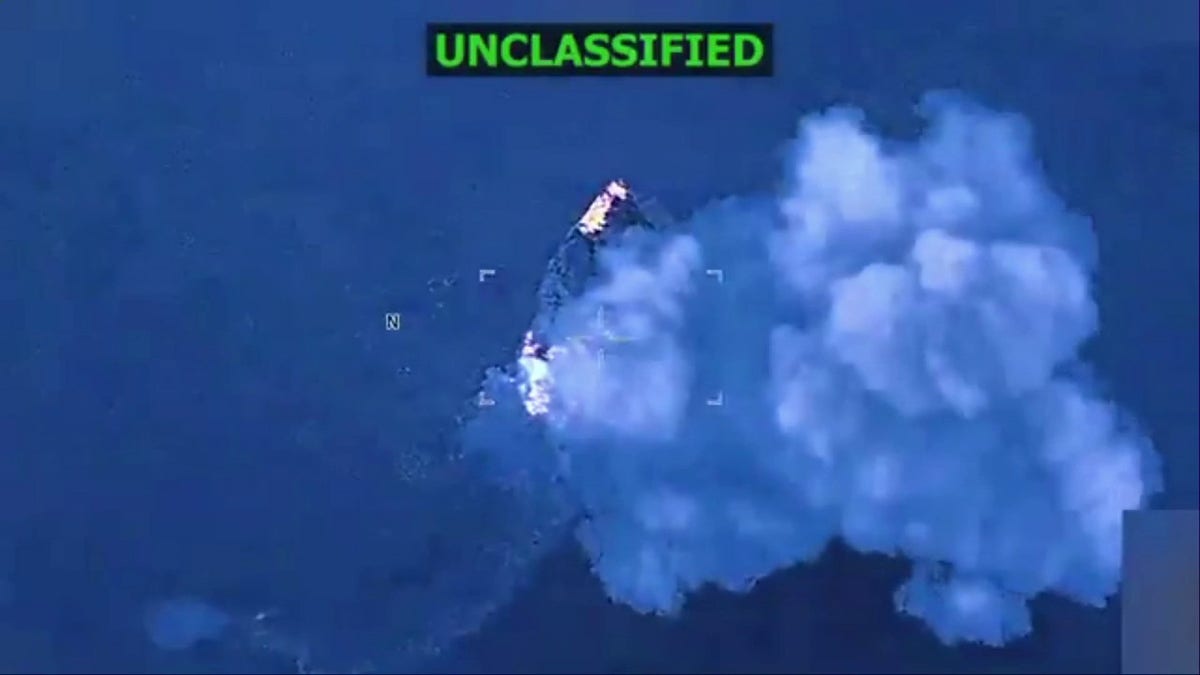
And in response to Petro’s assertion, Pentagon chief spokesperson Sean Parnell fired back: «Every action taken by the Department is deliberate, lawful, and precise. (Department of War)
«In each case, the vessel was assessed by the U.S. intelligence community to be affiliated with a designated terrorist organization engaged at that time in trafficking illicit drugs, which could ultimately be used to kill Americans,» White House spokesperson Anna Kelly told Fox News Digital.
VENEZUELA HUMAN RIGHTS HIT NEW LOW AS US PUTS $50M BOUNTY ON MADURO’S HEAD: STATE DEPARTMENT
A White House official suggested to the Associated Press that they had been «much more forthcoming» than President Barack Obama’s administration was when it authorized strikes on militants in the Middle East.
Trump insists the strikes are saving tens of thousands of lives.
«A boat loaded with enough drugs to kill 25 TO 50 THOUSAND PEOPLE was stopped, early this morning off the Coast of Venezuela, from entering American Territory,» he said after an Oct. 14 strike.
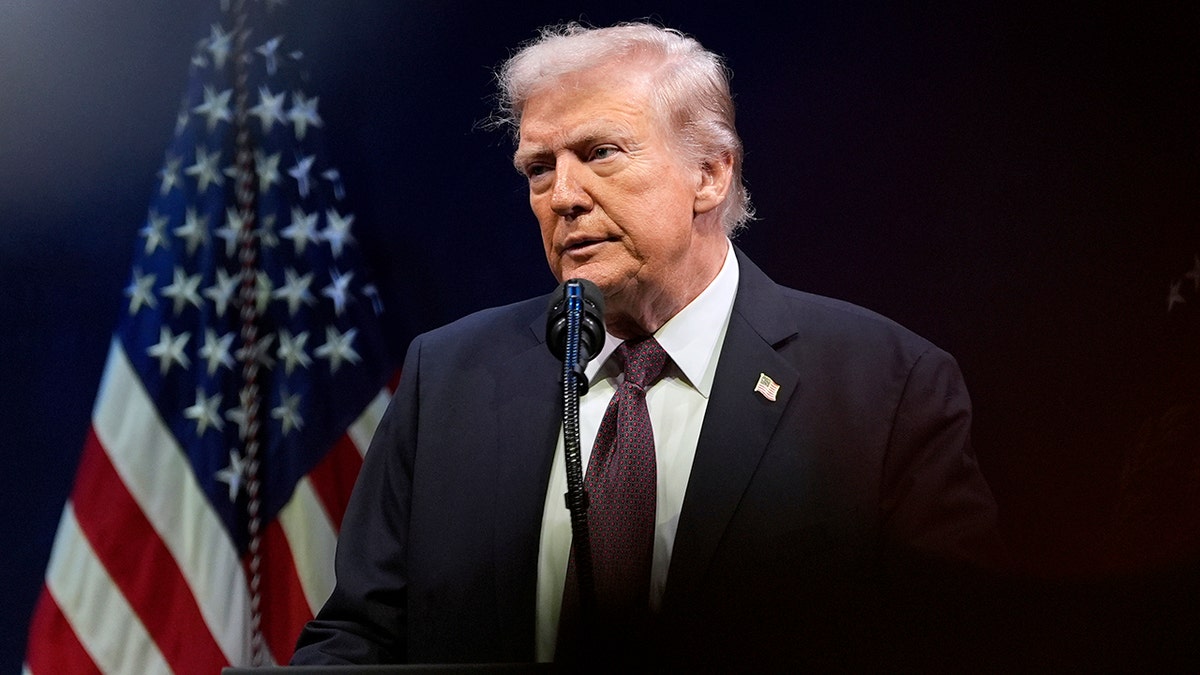
Trump insists the strikes are saving tens of thousands of lives.»A boat loaded with enough drugs to kill 25 TO 50 THOUSAND PEOPLE was stopped, early this morning off the Coast of Venezuela, from entering American Territory,» he said after an Oct. 14 strike. (AP Photo/Alex Brandon)
Defense experts believe it will be up to Congress to decide if they want to demand more information about the strikes, which have killed more than 30 people.
Rep. Adam Smith, the top Democrat on the House Armed Services Committee, called for his committee to hold a panel on the strikes on Monday.
CLICK HERE TO DOWNLOAD THE FOX NEWS APP
«President Trump and his administration continue to fail to answer pressing questions regarding the president’s orders to carry out lethal U.S. military strikes on boats in the Caribbean Sea,» Smith said in a statement.
«They have failed to demonstrate the legality of these strikes, provide transparency on the process used or even a list of cartels that have been designated as terrorist organizations,» he added. «We have also yet to see any evidence to support the president’s unilateral determinations that these vessels or their activities posed imminent threats to the United States of America that warranted military force rather than law enforcement-led interdiction.»
latin america,south america,drugs,venezuelan political crisis,conflicts defense

 CHIMENTOS2 días ago
CHIMENTOS2 días agoLa fuerte actitud de Manu Urcera con Indiana Cubero que reveló la verdad de la interna familiar: “El saludo del piloto a la hija de Nicole Neumann por su cumpleaños”

 POLITICA2 días ago
POLITICA2 días ago“El Pollo” Carvajal revela cómo Chávez pagaba a Kirchner, Lula y Petro con dinero del narcotráfico

 POLITICA3 días ago
POLITICA3 días agoDenunciaron a dos periodistas por “inducir al engaño” a los votantes de La Libertad Avanza



